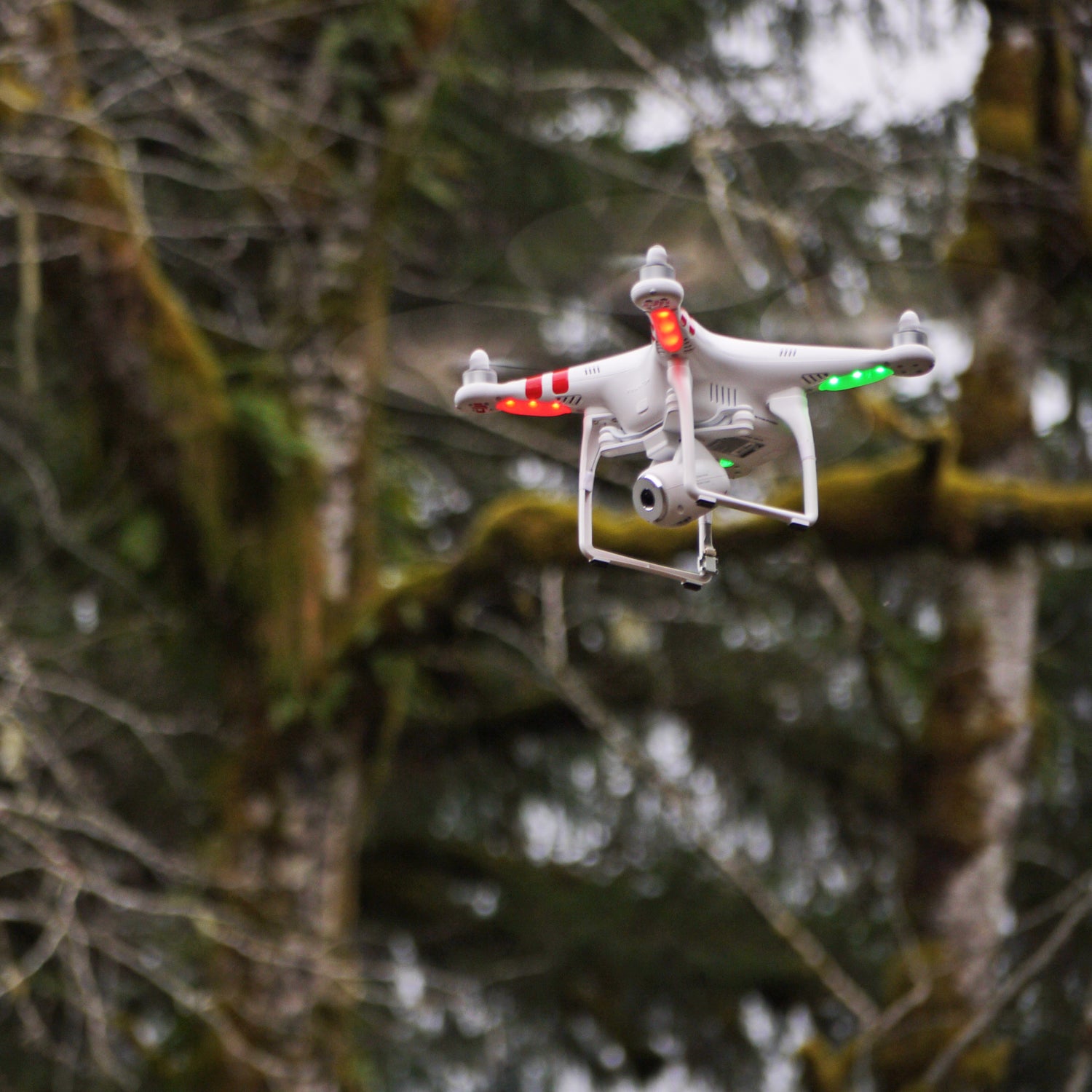As of Wednesday, pilots of hobbyist drones like the DJI Phantom will no longer be allowed to fly their gadgets in any national park.
The temporary ban, issued in June by Director of the United States National Park Service Jonathan Jarvis, covers all 401 units of the national park system, including national recreation areas and national historic monuments. August 20 is the deadline for all superintendents to comply with the policy.
Previous regulations had mostly banned drone flights in some parks. But the new rule leaves no loopholes.��It prohibits the “launching, landing, or operating” of a “device intended to be used for flight in the air without the possibility for direct human intervention from within or on the device,” including but not limited to “model airplanes, quadcopters, drones” used for “recreation or commerce.”
We never expected this back in March, when we published a feature raising concerns about hobbyists flying drones in the wilderness. But over the spring and summer, drones became “” in Yosemite, according to the Associated Press, and a UAV from a herd of bighorn sheep in Zion National Park. Visitors to Yellowstone watched one plonk into the rainbow-colored waters of the Grand Prismatic Spring, while those at a viewpoint on the south rim of the Grand Canyon rolled their eyes at a drone buzzing the horizon at sunset—before it fell out of the sky. Elsewhere, at least a few angry folks, like , attacked drone fliers.
This bad behavior spurred the park service into action. Citing the “dramatic growth” in the number of hobbyist drone flights in the United States and “a number of questions by park managers regarding concerns about their compatibility with the National Park Service mission,” Jarvis issued the order, in the form of a 13-page policy memorandum, on June 20, with the implementation deadline of August 20.
The ban is only temporary, designed to buy the Park Service time while it “considers how to address this new use on a longterm basis.” Read: gathers public feedback and takes maybe 18 months to write a drone-specific rule into the Federal Code of Regulations. And there are exceptions. Folks can still fly at places like the RC Field in Floyd Bennet National Recreation Area, New York. But all in all, it is a thorough legal smackdown, and it feels like the beginning of the end for drones in the wild.
An interdisciplinary group of Forest Service employees is also working on recommendations for senior leadership to use in future drone-specific policies. Currently, federal regulations prohibit taking off or landing within any of the 36 million acres of designated wilderness, but allow flights in the roughly 150 million other acres of the national forest system, including roadless areas. But new policies could come into effect as soon as 2015. “They’re getting close, but it’s probably not going to happen this year,” says Mike Ferris, public information officer for the U.S. Forest Service.
State Parks are also taking note. According to Matt Rumbaugh, director of professional development at the National Recreation and Park Association, the NRPA is inviting drone flyers and consultants to run “educational sessions” on drones, a “cutting-edge park issue,” at its annual meeting in October.
Not surprisingly, drone enthusiasts are already complaining about how the park service ban impinges on their freedoms. “I think it’s really really asinine,” says Dale Slear, a drone filmer and founder of .��
If the videos that most of them shot were even half as beautiful as the parks themselves, then we might agree. As is, we couldn’t be happier about this decision to slow down and think—and any other policy that allows the chance to create sensible, longterm rules.


